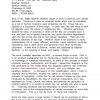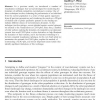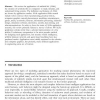ALIFE
2006
13 years 11 months ago
2006
The body-brain coevolution of aerial life forms has not been developed as far as aquatic or terrestrial locomotion in the field of artificial life. We are studying physically simu...
ALIFE
2006
13 years 11 months ago
2006
ALIFE
2006
13 years 11 months ago
2006
In a previous article, we introduced a number of visualization techniques that we had developed for monitoring the dynamics of artificial competitive coevolutionary systems. One of...
ALIFE
2006
13 years 11 months ago
2006
We review the applications of artificial life (ALife), the creation of synthetic life on computers to study, simulate, and understand living systems. The definition and features of...
ALIFE
2006
13 years 11 months ago
2006
Evolutionary theorists have long been interested in the conditions that permit the evolution of altruistic cooperation. Recent work has demonstrated that altruistic donation can ev...
ALIFE
2006
13 years 11 months ago
2006
It has been argued that a central objective of nanotechnology is to make products inexpensively, and that self-replication is an effective approach to very low-cost manufacturing....
ALIFE
2006
13 years 11 months ago
2006
Evolutionary activity statistics and their visualization are introduced, and their motivation is explained. Examples of their use are described, and their strengths and limitations...
ALIFE
2006
13 years 11 months ago
2006
One of the major challenges in the field of neurally driven evolved autonomous agents is deciphering the neural mechanisms underlying their behavior. Aiming at this goal, we have d...
ALIFE
2006
13 years 11 months ago
2006
This study presents a new evolutionary network minimization (ENM) algorithm. Neurocontroller minimization is beneficial for finding small parsimonious networks that permit a better...
ALIFE
2006
13 years 11 months ago
2006
We present a new bio-inspired approach applied to a problem of stereo image matching. This approach is based on an artificial epidemic process, which we call the infection algorith...



